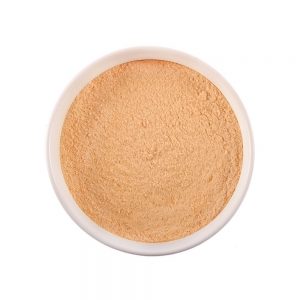Product Details
Echinacea Tops Powder:
Place of Origin: Germany – Trade
Botanical Name
Form
Herbal actions
What is Echinacea .
Echinacea is a native North American coneflower that was discovered and used as a traditional herbal remedy for more than 400 years by the Great Plains Indian tribes. Technically classified as an herb, several species of the Echinacea plant are used to make medicine from its flowers, leaves and roots
Prior to 1950 and the introduction of antibiotics, Echinacea held an esteemed medicinal status. As the health care industry shifted, antibiotic became the rage, and the now famed herb lost much of its esteem.
Most people don’t realize that the chemicals contained in the root differ significantly from those in the upper part of the plant. If we analyze the roots, we can see that they have high concentrations of volatile oils, while the parts that grow above the soil tend to contain more polysaccharides that are known to trigger immune function.
Many of Echinacea’s chemical constituents are, in fact, powerful immune system simulators and can provide a significant therapeutic value. A few that you’re probably familiar with are essential oils, flavonoids, inulin, polysaccharides and vitamin C .
Echinacea Benefits
Echinacea purpurea (Purple Coneflower )should be of particular interest during the cold and flu season when you are exposed to these illnesses on a regular basis. When used correctly it is the closest thing to a cure for the common cold.
Echinacea purpurea stimulates the overall activity of the cells responsible for fighting all kinds of infection. Unlike antibiotics, which directly attack bacteria, Purple cone flower makes our own immune cells more efficient at attacking bacteria, viruses and abnormal cells, including cancer cells. It increases the number and activity of immune system cells including anti-tumor cells, promotes T-cell activation, stimulates new tissue growth for wound healing and reduces inflammation in arthritis and inflammatory skin conditions.
The most consistently proven effect of Echinacea purpurea is in stimulating phagocytosis (the consumption of invading organisms by white blood cells and lymphocytes). Extracts of Echinacea purpurea can increase phagocytosis by 20-40%.
Echinacea purpurea also stimulates the production of interferon as well as other important products of the immune system, including “Tumor Necrosis Factor”, which is important to the body’s response against cancer.
Echinacea purpurea also inhibits an enzyme (hyaluronidase) secreted by bacteria to help them gain access to healthy cells. Research in the early 1950’s showed that Purple coneflower could completely counteract the effect of this enzyme, helping to prevent infection when used to treat wounds.
Although Echinacea purpurea is usually used internally for the treatment of viruses and bacteria, it is now being used more and more for the treatment of external wounds. It also kills yeast and slows or stops the growth of bacteria and helps to stimulate the growth of new tissue. It combats inflammation too, further supporting its use in the treatment of wounds.
Latin Names
Echinacea purpurea, Echinacea angustifolia (Narrow-leaved purple coneflower), Echinacea pallida (pale purple coneflower.
Common Names
Purple Coneflower, American Coneflower, Black Samson, Comb Flower, Hedgehog, Indian Head, Rudbeckia, Sampson Head, Scurvy Root, Snakeroot
Uses
Improves immune system where patient suffers chronic tiredness and is susceptible to minor infections. Colds, coughs and flu and other upper respiratory conditions, enlarged lymph glands, sore throat, urinary tract infections. Boils, acne, duodenal ulcers, flu, herpes, candida and persistent infections. As a mouthwash for sore throats tonsillitis, mouth ulcers and gum infections. Externally: Wounds, skin regeneration and skin infections, psoriasis, eczema and inflammatory skin conditions.
Echinacea purpurea has no known toxicity and has an excellent safety record, being very well tolerated by most people. However, Echinacea purpurea should not be used in progressive systemic and autoimmune disorders such as tuberculosis, leucosis, connective tissue disorders, collagenosis and related diseases such as lupus, according to the German Kommission E. Its use in AIDS or opportunistic infections in AIDS patients is controversial.
Alleviates Pain
Echinacea’s history began when echinacea purpurea was used by the Great Plains Indians as a painkiller. It’s especially effective for the following types of pain:
- Pain in the bowels
- Pain associated with headaches
- Pain associated with HSV (Herpes)
- Pain associated with gonorrhea
- Pain associated with measles
- Snake bites
- Sore throats
- Stomach ache
- Tonsillitis
- Toothache
Equine Use
For the maintenance of the immune system All horses sometimes need a little extra help, particularly those working hard, travelling regularly or facing a particular challenge. Echinacea is perhaps the best known herb for support of the immune system. Research shows that echinacea also support the health of red blood cells, essential for competition horses. Echinacea provides the ideal day-to-day support of the immune system.
Echinacea for horses is traditionally used to boost the immune system. It is an ideal herb for helping in the early stages of an infection and to help with recovery from an illness or accident.
Herbs can help support a healthy respiratory system, which is critical to the health of your horse. If you wish to maintain your horses respiratory system in peak condition then nature has provided some excellent plants and herbs ideal for this job.
Echinacea Can assist
- Boost the immune system
- Strengthen and build stamina
- Maintain a healthy respiratory system
- Assist with inflammation and pain




Reviews
There are no reviews yet.